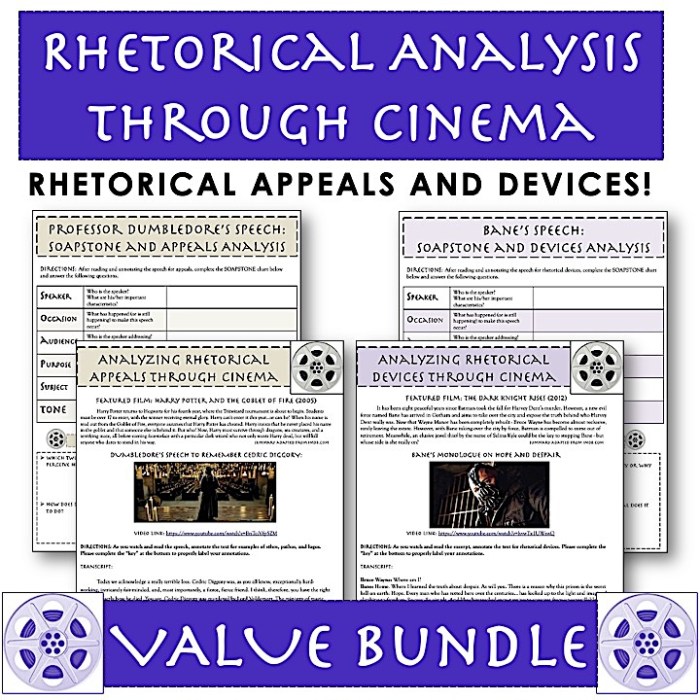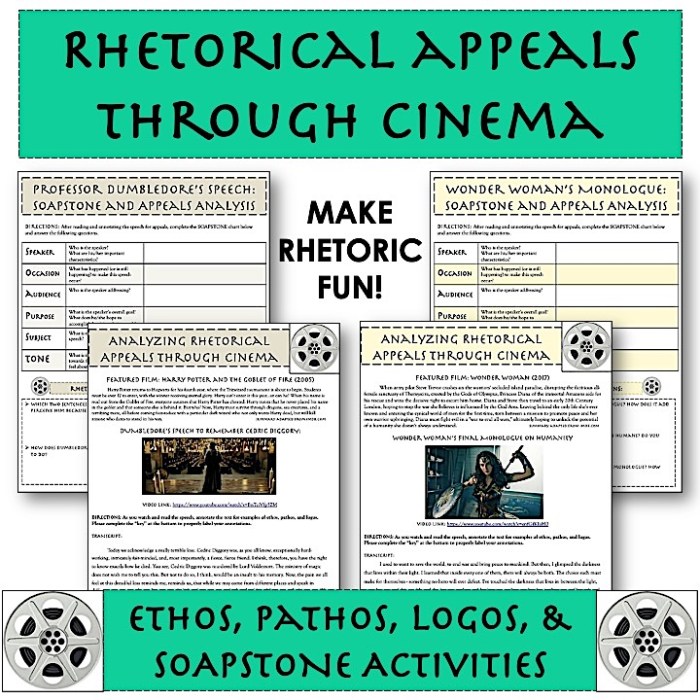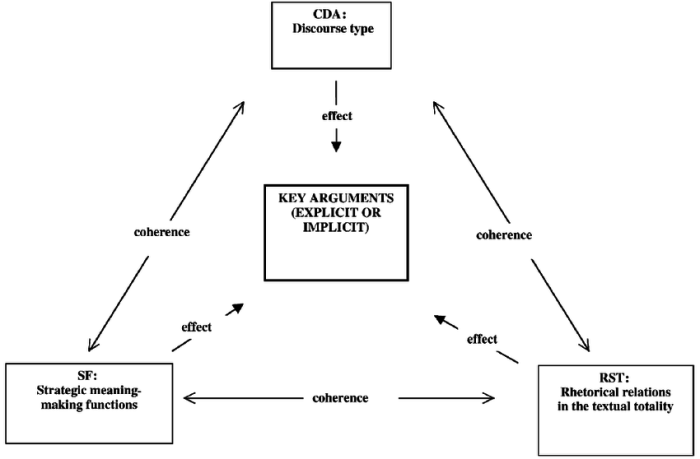Analyzing rhetorical devices through cinema is a captivating field of study that unveils the persuasive techniques employed by filmmakers to shape our cinematic experiences. By examining visual, auditory, and narrative elements, we gain insights into how these devices influence our emotional responses, cognitive interpretations, and behavioral reactions.
This comprehensive guide delves into the types of rhetorical devices commonly found in cinema, exploring their significance and the methods used to analyze them. Through case studies and ethical considerations, we uncover the profound impact these devices have on our understanding and appreciation of cinematic works.
Types of Rhetorical Devices in Cinema

Rhetorical devices are techniques used to enhance the persuasive or expressive power of language. In cinema, these devices are employed through a combination of visual, auditory, and narrative elements. Some of the most common rhetorical devices in cinema include:
- Metaphor: A figure of speech that compares two unlike things without using “like” or “as.” In cinema, metaphors can be created through visual imagery, such as a shot of a character being consumed by darkness to represent their inner turmoil.
- Simile: A figure of speech that compares two unlike things using “like” or “as.” In cinema, similes can be used to create vivid imagery and evoke emotions, such as a shot of a character’s eyes being described as “sparkling like stars.”
- Personification: A figure of speech that gives human qualities to nonhuman things. In cinema, personification can be used to create a sense of intimacy and connection between the audience and the characters, such as a shot of a tree swaying in the wind as if it were dancing.
- Irony: A figure of speech that presents a contrast between what is expected and what actually happens. In cinema, irony can be used to create humor, suspense, or dramatic tension, such as a scene where a character who claims to be fearless is shown to be terrified.
- Hyperbole: A figure of speech that uses exaggeration for emphasis. In cinema, hyperbole can be used to create a sense of grandeur or absurdity, such as a shot of a character jumping over a building in a single bound.
These are just a few examples of the many rhetorical devices that can be used in cinema. By understanding and analyzing these devices, we can gain a deeper appreciation for the art of filmmaking and the ways in which it can communicate with audiences.
Helpful Answers: Analyzing Rhetorical Devices Through Cinema
What are the most common types of rhetorical devices used in cinema?
Common rhetorical devices in cinema include metaphors, similes, personification, symbolism, irony, and foreshadowing.
How can we effectively analyze rhetorical devices in cinematic works?
To analyze rhetorical devices in cinema, consider the context, genre, and target audience. Employ various analytical approaches, such as close reading, semiotics, and discourse analysis.
What is the significance of ethical considerations when analyzing rhetorical devices in cinema?
Ethical considerations are crucial as rhetorical devices can be used for manipulation and persuasion. It’s essential to evaluate the potential biases and implications of these devices on the audience.

